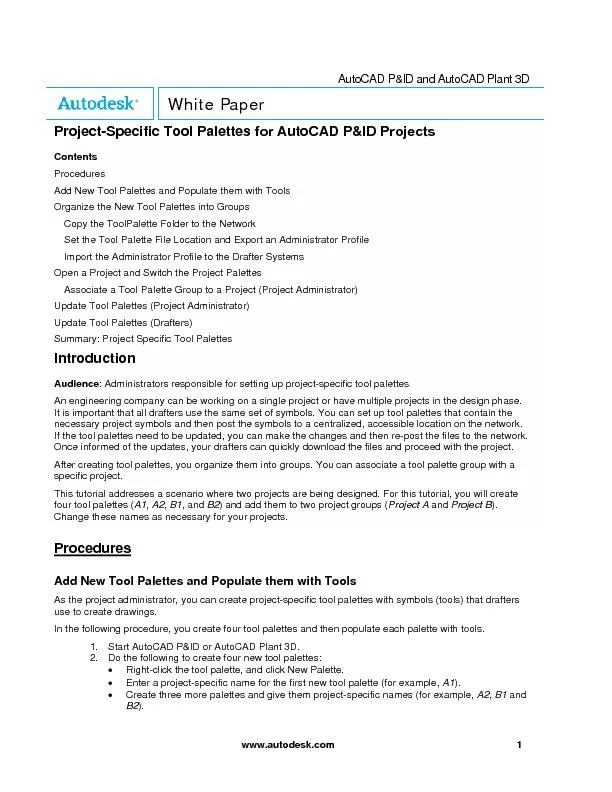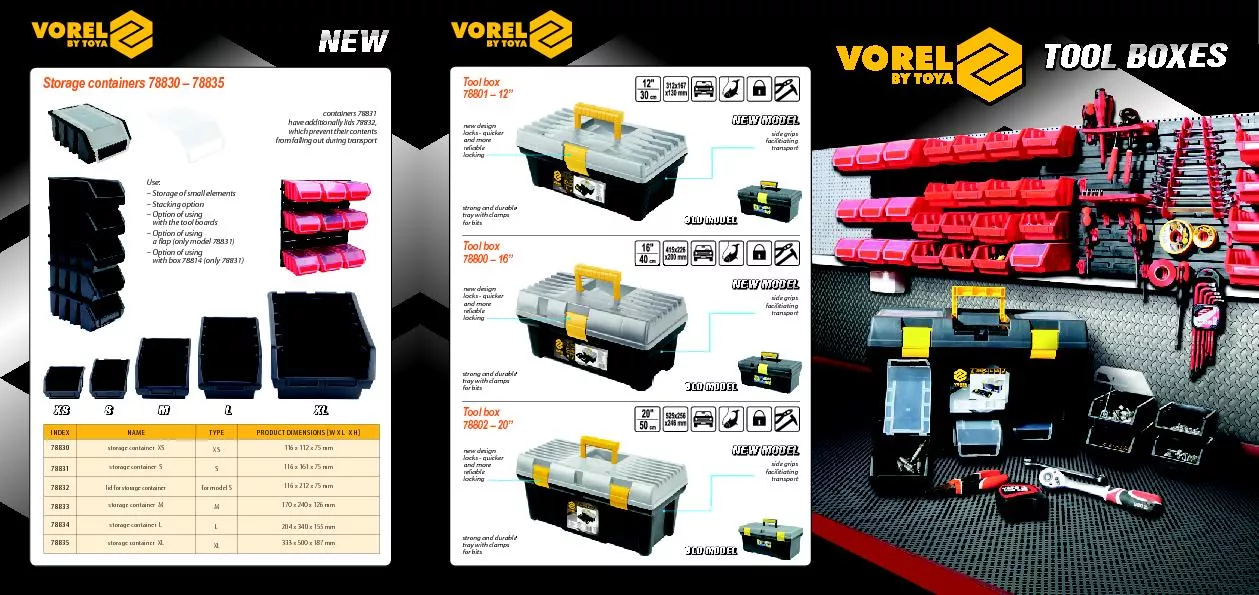PDF-Project-Specific Tool Palettes in AutoCAD P&ID and AutoCAD Plant 3D .
Author : marina-yarberry | Published Date : 2016-07-05
Contents Add New Tool Palettes and Populate them with Tools wwwautodeskcom 1 ProjectSpecific Tool Palettes Do the following to populate the new palettes with tools
Presentation Embed Code
Download Presentation
Download Presentation The PPT/PDF document "Project-Specific Tool Palettes in AutoCA..." is the property of its rightful owner. Permission is granted to download and print the materials on this website for personal, non-commercial use only, and to display it on your personal computer provided you do not modify the materials and that you retain all copyright notices contained in the materials. By downloading content from our website, you accept the terms of this agreement.
Project-Specific Tool Palettes in AutoCAD P&ID and AutoCAD Plant 3D .: Transcript
Download Rules Of Document
"Project-Specific Tool Palettes in AutoCAD P&ID and AutoCAD Plant 3D
."The content belongs to its owner. You may download and print it for personal use, without modification, and keep all copyright notices. By downloading, you agree to these terms.
Related Documents











![[DOWLOAD]-Actualización VS Code, AutoCAD 2021 para Experto AutoCAD con Visual LISP (Spanish](https://thumbs.docslides.com/970886/dowload-actualizaci-n-vs-code-autocad-2021-para-experto-autocad-con-visual-lisp-spanish-edition.jpg)
![[eBOOK]-Controlling AutoCAD from Visual LISP Release 2019 edition. (AutoCAD expert\'s](https://thumbs.docslides.com/970935/ebook-controlling-autocad-from-visual-lisp-release-2019-edition-autocad-expert-s-visual-lisp-book-2.jpg)
![[PDF]-Actualización VS Code, AutoCAD 2021 para Experto AutoCAD con Visual LISP (Spanish](https://thumbs.docslides.com/970941/pdf-actualizaci-n-vs-code-autocad-2021-para-experto-autocad-con-visual-lisp-spanish-edition.jpg)
![[BEST]-Controlling AutoCAD from Visual LISP: Release 2019 edition. (AutoCAD expert\'s](https://thumbs.docslides.com/974124/best-controlling-autocad-from-visual-lisp-release-2019-edition-autocad-expert-s-visual-lisp-book-2.jpg)